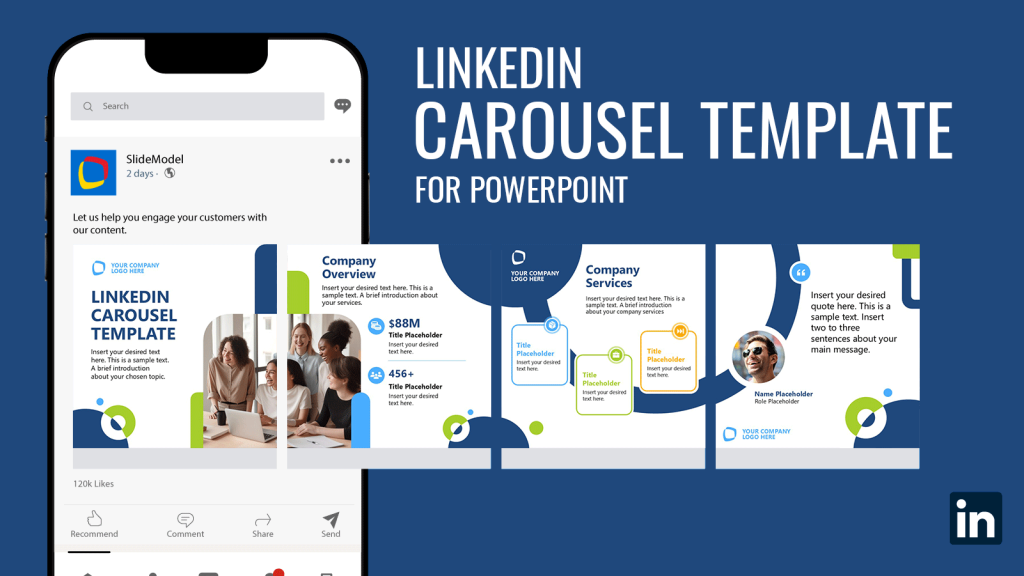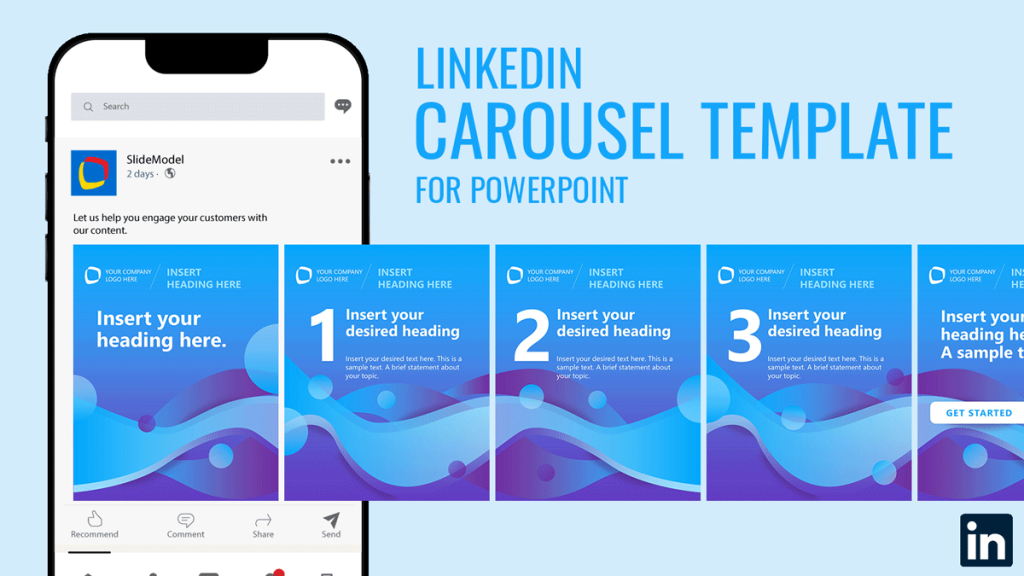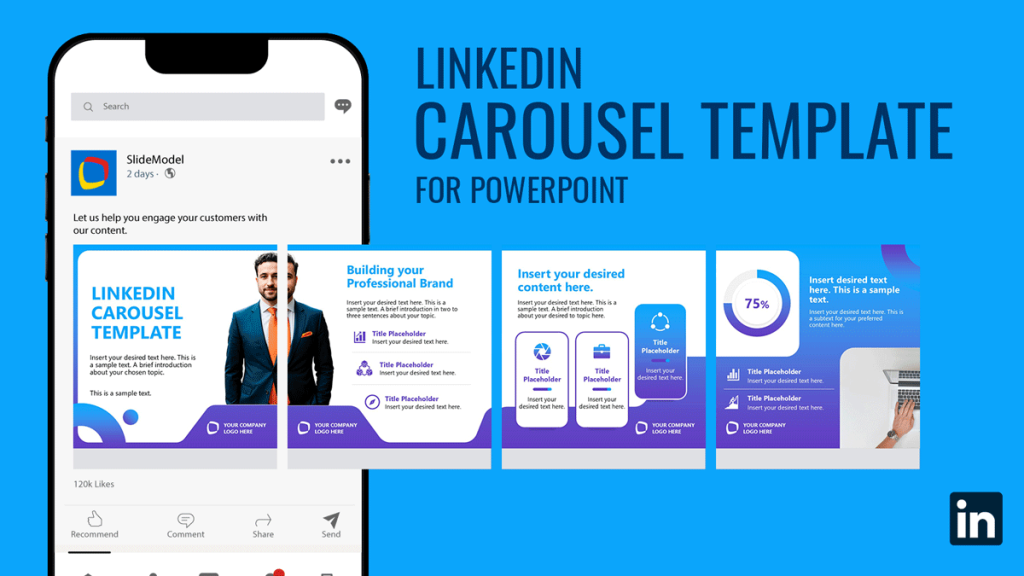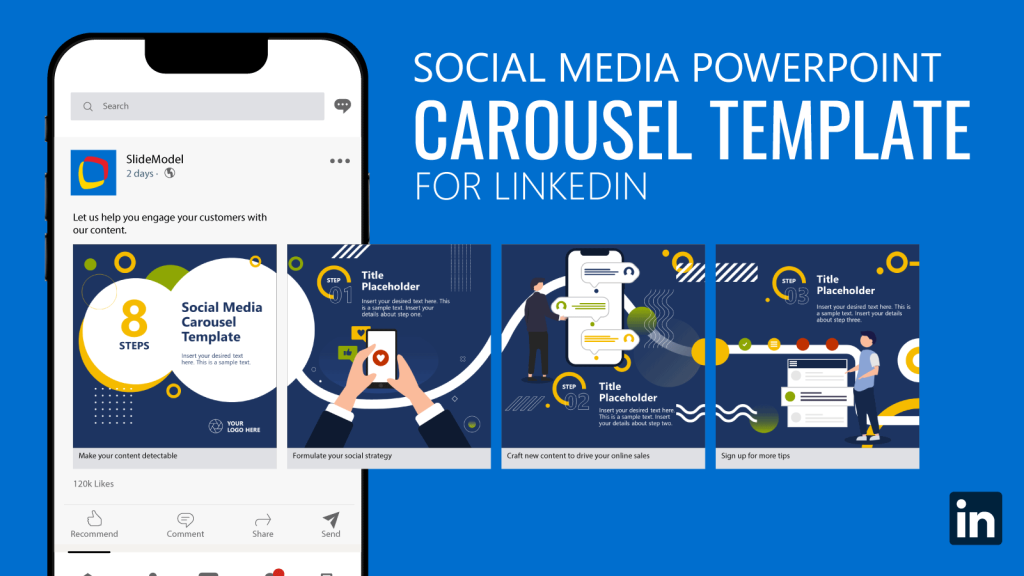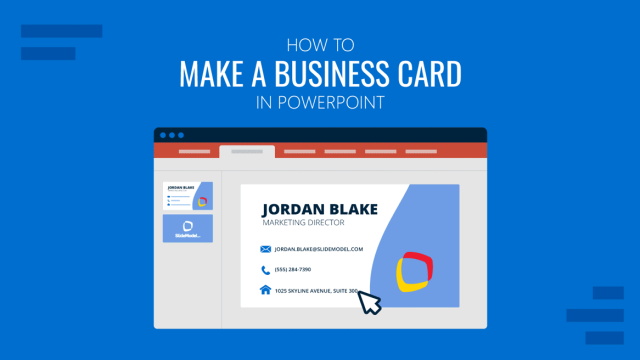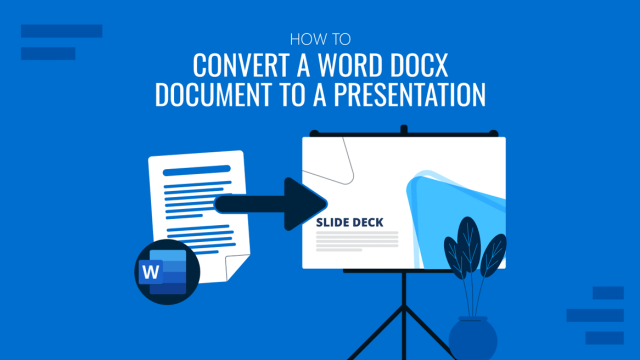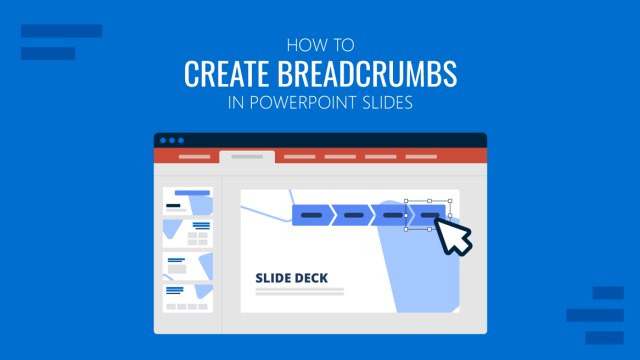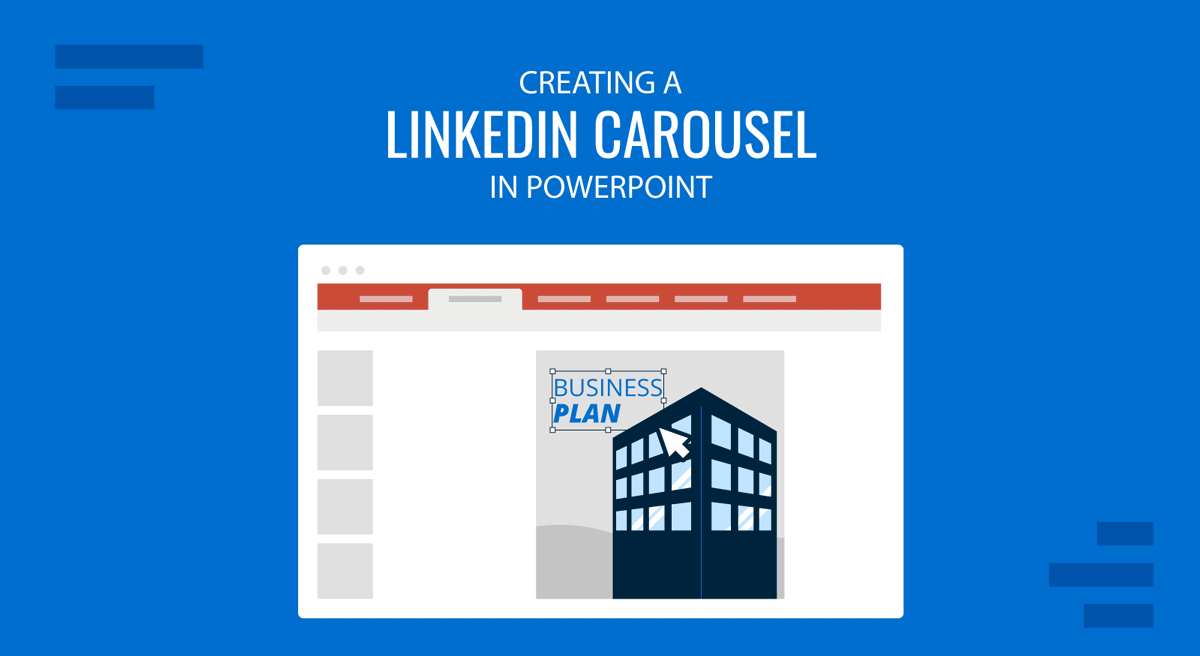
LinkedIn carousels have become an effective way to share engaging, interactive content that stands out in the feed. These multi-slide posts allow professionals and brands to tell compelling stories, share insights, or present data to engage followers. Whether promoting your brand or services, explaining a concept, or showcasing a portfolio, LinkedIn carousels can help drive engagement, increase brand visibility, and foster meaningful interactions.
PowerPoint is an excellent tool for creating LinkedIn carousels because of its user-friendly interface, flexible design options, and ability to export high-quality slides in PDF format, which LinkedIn supports. You can create professional and visually appealing carousel posts by leveraging PowerPoint without needing advanced graphic design applications. In this tutorial, we will walk you through the step-by-step process of designing a LinkedIn carousel using PowerPoint, covering everything from setting up dimensions to exporting the final file.
Steps for Making a LinkedIn Carousel in PowerPoint
To make a LinkedIn carousel in PowerPoint, you will need to set a suitable slide aspect ratio, design the slides, and export your file to PDF format before uploading it to LinkedIn. To demonstrate this, we will use the Business Strategy Plan PowerPoint Template. Alternatively, you can use the 8-Step Social Media Carousel PowerPoint Template, which is optimized for LinkedIn, but it won’t fit all requirements if you need specific business graphs.
Step 1: Setting Up the Slide Dimensions
Setting up the correct slide dimensions is essential to ensuring your LinkedIn carousel looks visually appealing and consistent. LinkedIn carousels work best in a 1:1 aspect ratio, meaning the recommended dimensions are 720×720, or 1080×1080 pixels. This ensures your slides are optimized for mobile and desktop viewing, filling the maximum available space on the LinkedIn feed. Here is how to reformat your slides for LinkedIn:
- In PowerPoint, go to Design -> Slide Size > Custom Slide Size to set up the slide dimensions.
- Set the width to 720 pixels and the height to 720 pixels (720×720) or 7.5 inches width and 7.5 inches height (19.05 cm if using the metric system). You can also try the 4:5 aspect ratio if you prefer taller images.
- Click OK and choose the Ensure Fit option to adjust the content properly.
- Save the file as a template if you use this size for future LinkedIn carousels.
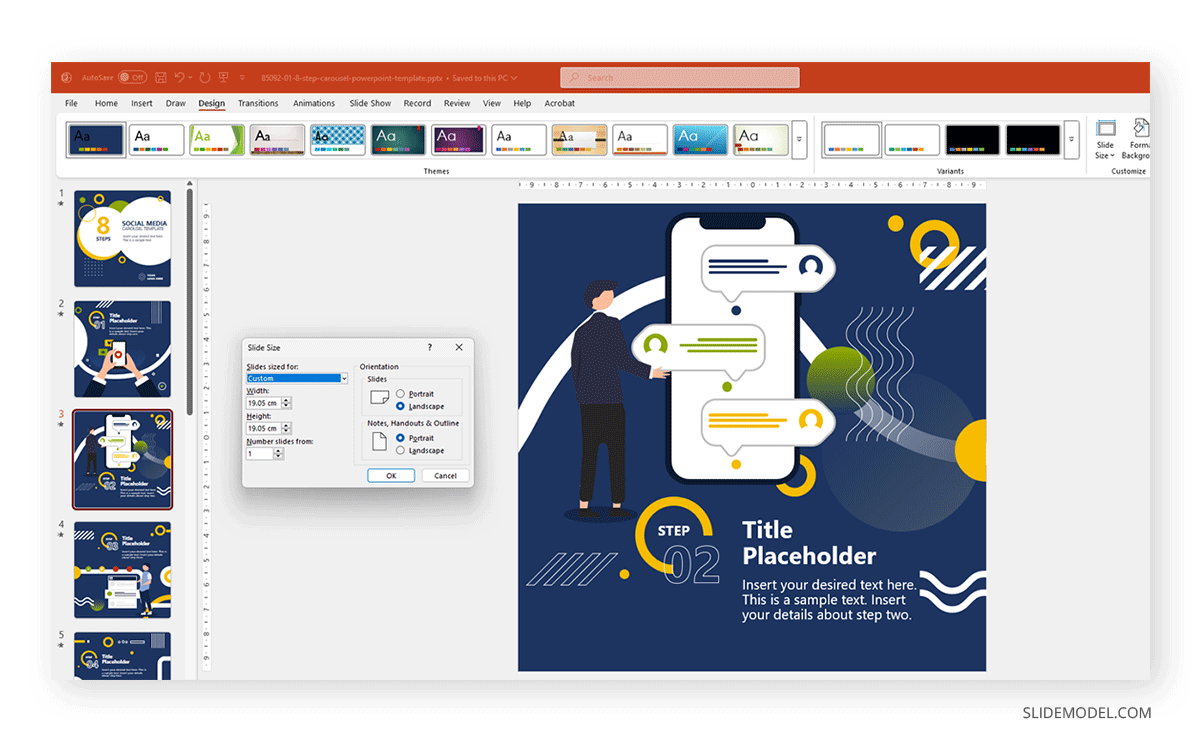
Step 2: Designing the Carousel Slides
A LinkedIn image carousel should have a clean and professional look while keeping the audience engaged. Below is a list of guidelines and recommendations that you can use to design effective slides.
Create a Minimalist Slide Design
A minimalist, uncluttered design can enable you to create engaging slides for a LinkedIn carousel. Some considerations include the following:
- Avoid cluttered slides and stick to a single key topic or message per slide.
- Use a combination of text, visuals, and white space for a balanced design.
- Maintain consistency by using your brand’s color palette.
- Choose easy-to-read fonts like Arial, Calibri, Aptos, Helvetica, or Montserrat.
- Ensure font size is large enough for mobile viewing (recommended: 36pt+ for headers, 24pt+ for body text).
- Avoid long paragraphs. Break text into short, impactful phrases.
- Use bullet points or icons to emphasize key points.
Add Engaging Visuals
Visual aids play an important role in digital engagement. By using neat-looking, unique, and high-quality visuals, you can make your content more engaging. When working on visual aids, consider the following:
- Use high-quality images that align with the message.
- Incorporate charts, infographics, and illustrations to simplify complex information.
- Ensure the image resolution is at least 300 DPI to prevent upload blurriness.
- If you find it difficult to create unique visuals, use AI tools to generate relevant visual content.
Leverage Icons and Shapes
Icons and shapes are easy to work with and can help enhance the quality of visuals created in PowerPoint. Here’s how you can use icons and shapes to your advantage:
- You can use PowerPoint’s built-in icons or third-party icons, such as those from The Noun Project or SlideModel icon templates, to create visually appealing slides.
- Shapes can be used as background elements to add depth.
- Avoid stocky, generic images and aim for custom visuals where possible.
Step 3: Creating Smooth Transition Between Slides to Achieve the Carousel Effect
You will need to create smooth transitions to achieve the carousel effect when posted on LinkedIn. To create a seamless scrolling effect between slides, avoid overlapping slide elements, maintain alignments across slides, avoid animations, and opt for consistency in your design.
Use Overlapping Elements
Repeat a part of an image or text from the previous slide onto the next. This creates a visual connection that makes the transition feel natural.
Maintain Alignment Across Slides
Use PowerPoint’s Align and Distribute tools to keep consistency. Group elements together to avoid misalignment when adjusting the layout.
Avoid Animations in Slides
LinkedIn carousels do not support animations; instead, they rely on static design techniques like layering elements effectively. Furthermore, since you will be exporting your slides as PDF, animations and transition effects will not carry over to the PDF document. Instead, opt for slide designs that appear natural when you switch from one slide to another, giving them a smooth transition in the carousel.
Maintain Consistency
To maintain a smooth flow across slides, you can use guidelines and grids via View -> Guides/Gridlines to align elements. Keep a consistent margin around the content to avoid cropping when viewed on LinkedIn. Plan the transitions by ensuring overlapping elements appear on adjacent slides.
Consistency is key for maintaining a cohesive brand presence across multiple carousels, which will help establish trust and recognition. Incorporating storytelling techniques, data-driven insights, and visually appealing design elements will keep your audience engaged and encourage them to interact with your content.
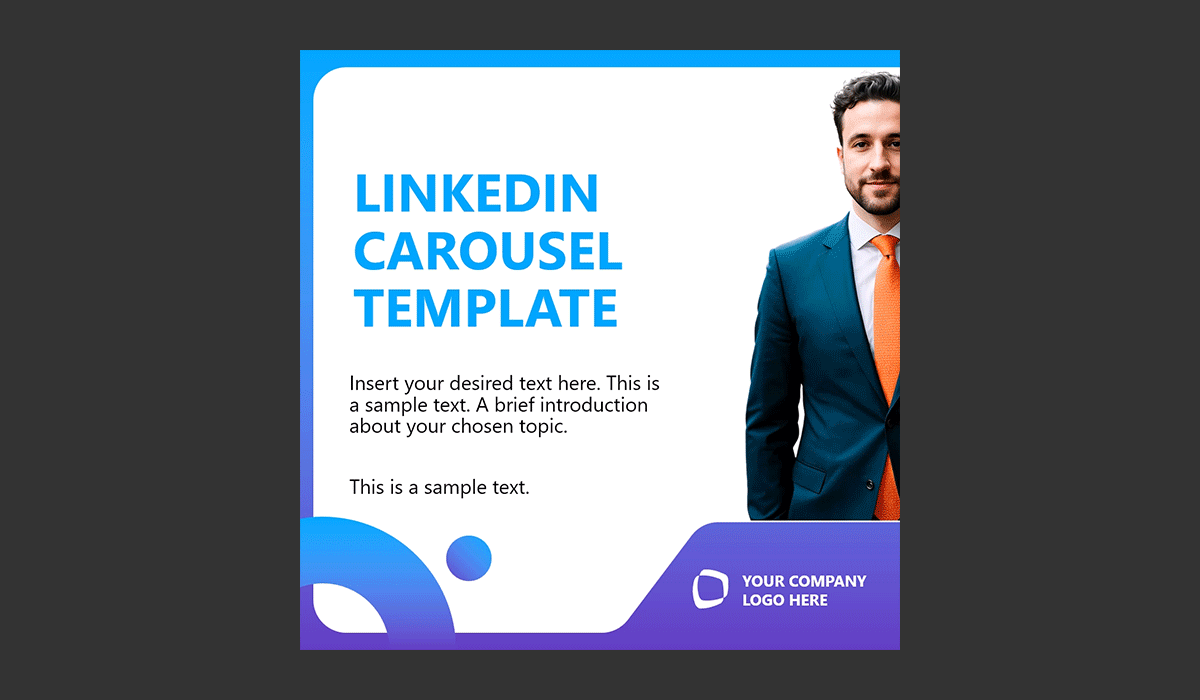
Step 4: Testing the Transition of Slides
Before you export your slides, it’s best to test how they transition by manually scrolling through them to see if the elements align properly. If there are any issues, adjust any misaligned text or images before finalizing the design.
Step 5: Exporting Carousel Slides as a PDF
LinkedIn only allows document uploads in PDF format for carousel posts. PowerPoint makes it easy to export high-quality slides.
- Click File -> Save As, and select PDF from the dropdown list under Save as Type.
- Click Options and ensure that Save Current Slide is unchecked (to save all slides in the slide deck).
- Select Standard (publishing online and printing) for the best quality.
Tip: Optimizing File Size Without Losing Quality
To reduce the file size when setting up your PDF file, consider the following for an optimized version of the exported slides:
- Compress images before saving to reduce file size.
- Use vector-based graphics instead of large PNGs to maintain clarity.
- Keep the final file size below 100MB to ensure smooth uploading on LinkedIn.
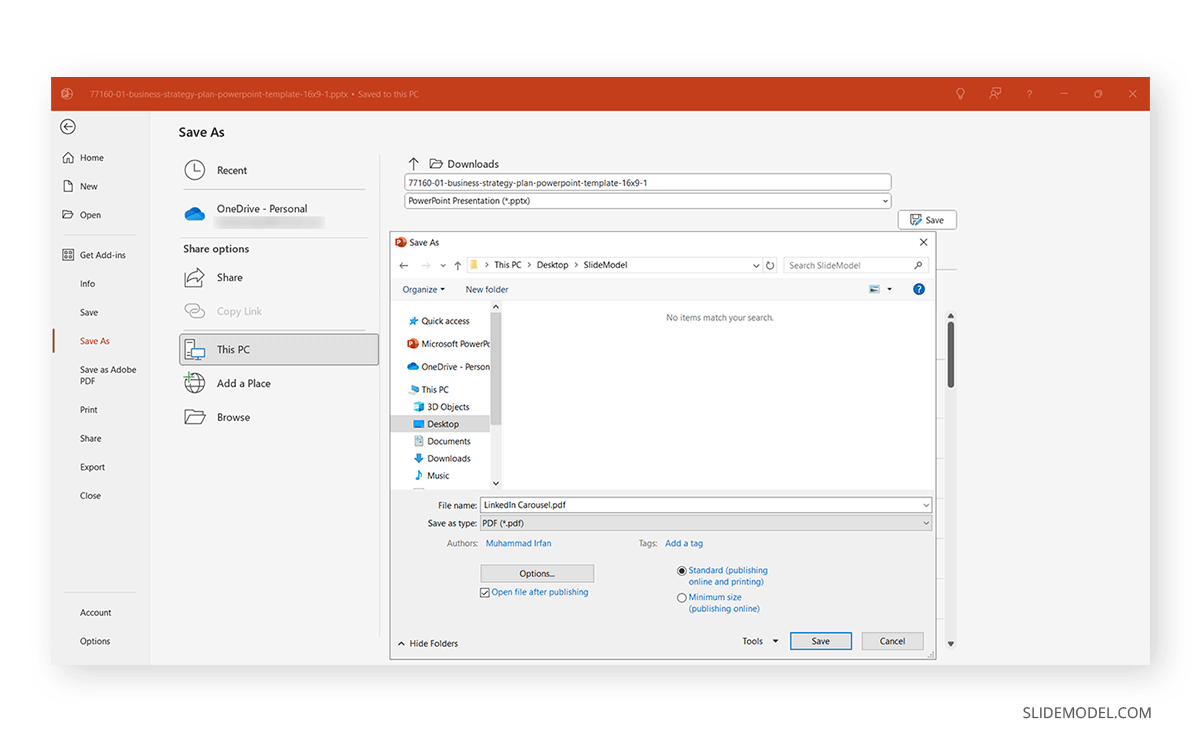
Step 6: Uploading PDF File to Create a LinkedIn Carousel
Once your slides are exported to PDF format, select the + icon, followed by the Add a Document option in LinkedIn, to upload the file and create a carousel.
How to Upload a Video into a LinkedIn Carousel
LinkedIn does not support video files directly within a carousel post (i.e. the PDF document-style swipeable posts). However, you can still incorporate video indirectly by following one of these methods.
Embed a Video Link in a Carousel Slide
Upload your video to a platform such as YouTube, Vimeo, or even LinkedIn itself. Copy the video URL and once you created the slides in PowerPoint, insert a screenshot/thumbnail image and overlay a Play button with a CTA that says: “Click the link in the post to watch”. Paste the video’s URL in the post copy text.
Reply in Comments
Once you uploaded your LinkedIn carousel, make a comment linking the video. You can mention in the images or in the post copy that you can find more information in the comments below.
Can You Use Common Slides as a LinkedIn Carousel?
The short answer is yes. We can export the presentation slides to PDF format and upload them directly into LinkedIn; however, there’s a problem in terms of readability.
Most slide decks are made with the 16:9 aspect ratio. This implies that they will appear zoomed out in order to fit into the square container format, which makes texts and all other elements smaller.
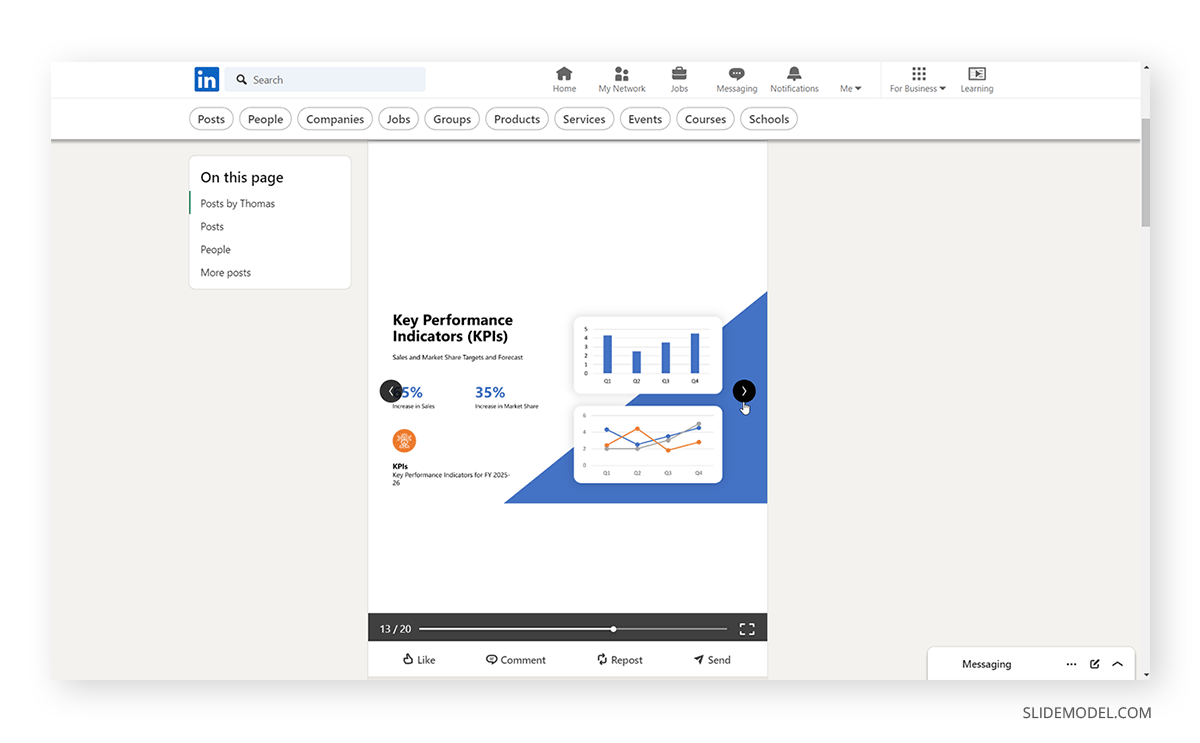
The long answer? Yes, you can use common slides as long as you’re ready to tweak the slide dimension to fit into the 1:1 aspect ratio. Otherwise, your content won’t be readable by others, especially in mobile devices. This requires extra time as, in many occasions, it implies shifting the layout to fit all the graphical elements without losing coherence.
Bonus Tip: Making Your LinkedIn Carousel Engaging
Using a few simple methods, you can make your LinkedIn Carousel engaging. Beyond design and structure, distribution is vital to your carousel’s success. Post at optimal times when your audience is most active, use relevant hashtags to expand reach, and actively engage with comments to foster conversations. Encouraging shares and discussions will increase visibility and enhance the overall impact of your content. Below are a few suggestions for creating content that can be effective for a carousel post on LinkedIn.
1. Start with a Strong Hook
Your first slide should capture your attention immediately. Your first slide should immediately grab attention and compel the audience to keep scrolling. Consider the following for effective engagement:
- A bold statement that provokes curiosity.
- A thought-provoking question that encourages participation.
- A high-impact visual that intrigues the viewer at first glance.
- Using contrast in colors to make key text stand out.
- Highlighting a problem and hinting at a solution that will be revealed in the later slides.
Our guide on how to start a presentation can give you clear insights on the best hooks for presentations.
2. Maintain a Logical Flow
Guide the viewer through a structured narrative:
- Introduce the topic on the first slide in the carousel.
- Present key points in the middle of the slides.
- End your carousel with a clear call to action (CTA).
3. Encourage Engagement
Use branding elements like a logo, website, or social media handles subtly at the end. Add a call-to-action slide, with an interest area such as:
- “Comment below with your thoughts.”
- “Follow us for more insights.”
- “Visit our website to learn more.”
4. Test Before Posting
Before uploading, preview your carousel PPT to ensure the following to avoid issues when the carousel is posted on LinkedIn:
- Ensure that the text is readable on both mobile and desktop.
- Check images to ensure that they are clear and not pixelated.
- Test the scrolling effect to verify that it is working smoothly.
Recommended LinkedIn Carousel PowerPoint Templates
Final Words
Creating a LinkedIn carousel in PowerPoint is an excellent way to share visually compelling stories and insights with your professional network. You can create high-impact carousel posts that drive engagement by following these steps: setting up the correct dimensions, designing slides strategically, ensuring smooth transitions, and exporting in PDF format. Additionally, experimenting with different styles, testing your visuals, and analyzing performance metrics will help refine your approach. A well-structured carousel can help you stand out, showcase expertise, and provide valuable insights to your audience.
To maximize your carousel’s impact, always consider your audience. Understand what topics resonate with your followers and tailor your content to their needs. Monitor engagement metrics, such as impressions, clicks, and interactions, to identify what works best. Adjust future carousels based on audience feedback and trends to ensure continuous improvement.
Finally, don’t limit yourself to just LinkedIn since your PowerPoint-designed carousels can be repurposed for other platforms, such as Instagram slideshows, blog posts, or email newsletters. Leveraging multiple channels will ensure your content reaches a broader audience and delivers lasting value. By refining your approach and staying innovative, you can create compelling LinkedIn carousels that inform and inspire your audience to take action.
